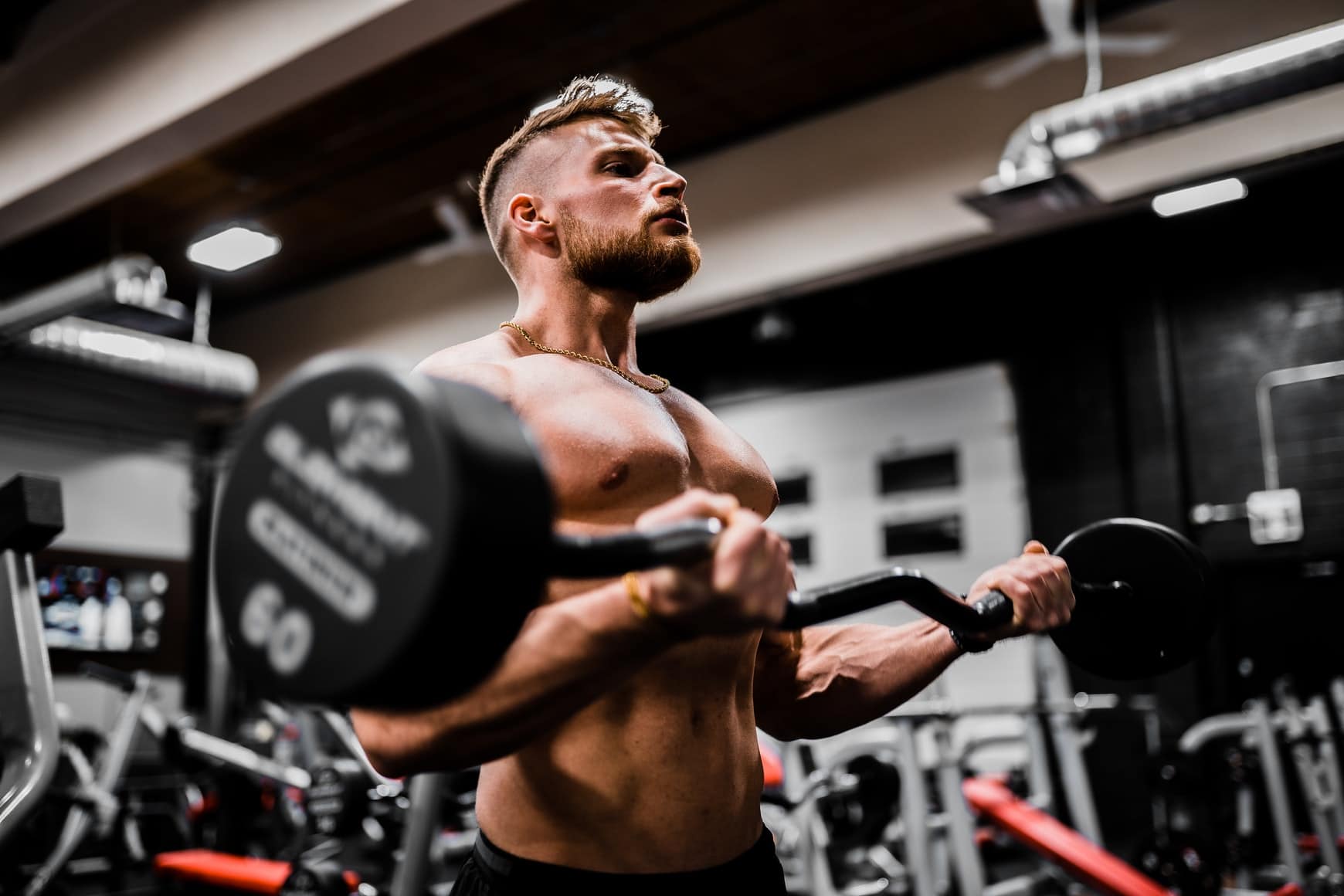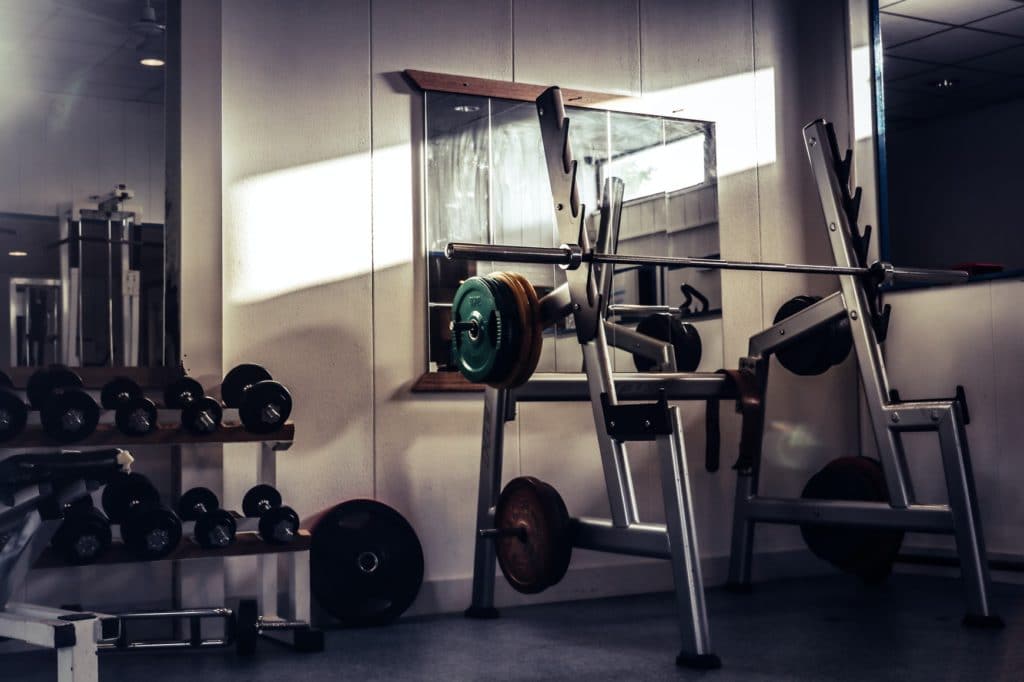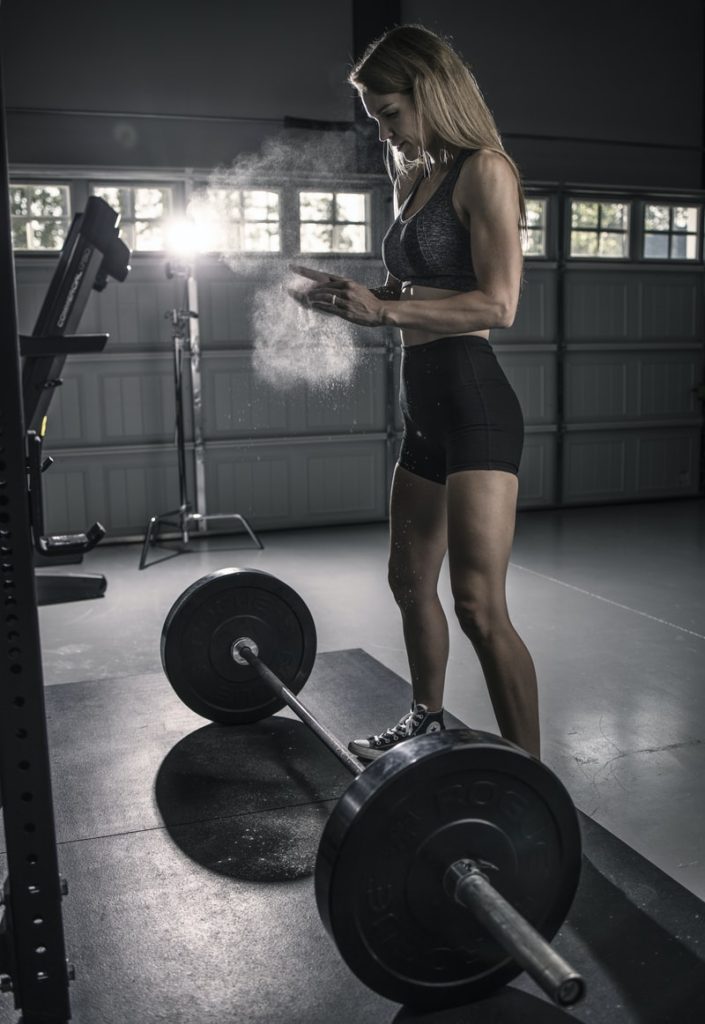
“There is actually a lot more data on weekly training frequency per muscle group, and overall the data supports that a higher frequency results in some additional gains, for both strength and hypertrophy.”
When I started lifting weights, the only split anyone ever talked about was what we now refer to as the classic “bro-split”, which is working one body part per day of the week. For example, you would work chest on Monday, arms on Tuesday, etc. But most beginners today lean towards a PPL split. That is dividing your muscles into three groups: push, pull, legs, and working each group twice a week. There are other splits to consider as well, such as a full body or upper/lower split. But which split is best for hardgainers?
You want to get the most out of your training, right? So you’re probably wondering how to pick the right split for you, and which is most effective for your lifestyle and goals. Keep reading and we will discuss all of this and more.
What is a training split?
A training split is simply how and why you choose to divide your muscles into groups for training. Some also refer to a split as a routine, the terms being interchangeable.
Anyone can group their muscles together however they want. Heck, you could train all the muscles on your left side one day, and the right side the next day. But there are a few chosen training splits that are wildly popular because they work very well. These would be the “Bro-split”, PPL, Upper/lower, and Full body. So let’s dive into each one and go over the benefits and possible downsides.
Bro-split
Also known as the bodybuilder split, body split, or body part split, this is simply a way of saying, “I like to split my muscles into 4-5 groups and work one group per day.” Commonly, the muscles are split into groups such as chest, arms, back, legs, and core. You would work the groups Monday through Friday and restart after a rest.
This kind of training split was prominent in classic bodybuilding, but the reason it’s still around today is simply that it works. The bro-split is also the most famous and forgiving split, as its simplicity makes it comprehensible and flexible.
The actual effectiveness of this kind of routine depends greatly on exercise selection and rep ranges. Many individuals are under the false impression that the harder you work a muscle, the better it will grow. You don’t have to destroy a muscle to see growth, in fact, the opposite is true. Too much volume can be detrimental to muscle growth. When designing a bro split, one should be conscious of total volume. If you’re dedicating one whole workout to your chest, then the volume should and will be very high, but it can’t be too high. What I mean is that there will be a sweet spot. Since you’re training a muscle group only once per week, you want volume, but you can’t go so high that you’re going to cause damage to that muscle group.
The argument against the bro-split is that you only work your muscle groups once per week. This may satisfy some, but if you’re striving to optimize your results, you may be wondering, “Why work my chest on only Mondays, when it feels recovered in 48 hours?”. This is referred to as training frequency and we’ll come back to this in a moment.
Other training splits allow for greater training frequency per muscle group. For individuals who want to build large legs, a bro-split is one of the least effective choices, as your legs will only get worked once a week, while your upper body is spread out over the rest of the week.
As long as the bro-split is designed well, it can be an effective workout routine.

Push, Pull, Legs (PPL)
While the bro-split was the most popular for a long time, PPL seems to be leading the way in recent years.
In a PPL routine, you’ll be splitting your muscles into the three push, pull, legs groups and training each group twice a week. Pushing muscles consist mainly of the chest, shoulders, triceps, while pull mainly consists of the back and biceps. The legs group is obviously everything lower body and I personally like to emphasize my core on leg days.
Most would run this split with a rest day between each cycle, such as PPL rest, PPL rest. So this allows the user to turn up the training frequency and work each group twice a week. It is also versatile and may be tailored for any goal such as strength, hypertrophy, or general fitness.
One very powerful benefit of push pull legs is that the “big three” compound lifts fit into it very nicely. As always, big compound lifts should be done at the beginning of the weight lifting segment of your workout. You should begin your push workout with the bench press, pull workout with the deadlift, and squat to start your leg workout.
Anecdotally, I found the best results running a PPL split for the majority of my training career.
Once again, like with any routine, the specific design is going to make or break your gains. If the routine is poorly thought out, PPL is going to do you no better than any other split.
Upper/Lower Split
This one is exactly what it sounds like. Your muscles are split up into two groups: upper and lower.
Since your body is split into only two muscle groups, this can allow for:
Increased training frequency (2-3 workouts per group per week). If you’ve plateaued in your training, you may need an increase in volume or frequency. Switching to an upper/lower split can be that increase in frequency as long as you’re spending adequate time on each muscle group. This could also help build your legs since they are worked every second workout.
Less training days overall. You work, you have kids, you have other commitments, so training 4-6 days a week might be too much to handle. If you can manage to train 3 days a week and use an upper/lower split, you can make great gains while only spending 3-4 hours in the gym per week.
If you want to make this split work on a 3 day a week schedule, you can alternate upper, lower, upper, then the next week lower, upper, lower.
If you can commit 6 days a week to the gym, then you can work each half 3 days a week. 3 uppers and 3 lowers. In this scenario, I would reduce the volume per workout, to avoid burning out. More but shorter workouts. This can be a great compromise for someone who is for some reason restricted to short sessions.

Full-body
A full-body routine is, as it sounds, targeting the full body. There are a few different ways to approach this kind of routine and for that reason, it should be carefully designed.
While it is called “full-body” you shouldn’t be doing the exact same workout every time you set foot in the gym. It’ll instead be broken up, but not by muscle group. One very common and effective approach would be to begin each workout with either the bench press, squat, or deadlift. These are compound exercises, meaning that they work multiple muscles at once, and are highly effective at building both strength and size.
One might choose to start with one of the big three compound exercises, and then perform a recycled exercise selection hitting every body part.
Another great option is to create three different workouts. For example, workout A might include the squat to start, then continue to work all the body parts with an emphasis on leg exercises, while workout B could start with the bench press and emphasize pressing movements.
The bottom line is that you work every body part every session, but with enough variance that you’re not performing the same workout over and over again until an injury occurs.

Which training split is the most effective?
The one that works the best for you.
Overall, the routine that best fits your lifestyle, goals, and schedule, is going to deliver the best results for you.
A meta-analysis was done in 2018 by Grant W. Ralston et al. comparing low frequency, (1 day a week), medium frequency (2 days a week), or high frequency (≥ 3 days a week) resistance training from 12 studies and ultimately found that high-frequency resistance training was not strongly correlated with an increase in strength gains. The higher frequency groups did, however, see an increase in strength, but the overall effect size was small.
This study done in 2015 by Brad Schoenfeld et al found similar results when testing weekly training frequency for hypertrophy gains. This study tested well-trained men and compared training muscle groups 1 day per week versus 3 days per week. The results showed that higher training frequencies resulted in greater hypertrophy gains, but not by much.
There is actually a lot more data on weekly training frequency per muscle group, and overall the data supports that a higher frequency results in some additional gains, for both strength and hypertrophy.
Every individual is different. I personally find that my strength sky-rockets as I increase frequency, but I’ve been unable to identify a similar correlation regarding my hypertrophic gains. In fact, I’ve found that my muscles grow best when I focus on quality repetitions and well-designed exercise selection, regardless of frequency.
So which training split is best? Well, as I said, the one that works for you is the best one for you. If one was indisputably superior for everyone, I wouldn’t even be writing this article.
Which split is best for a hardgainer?
Well, it is first important for you to determine why you think you’re a hardgainer. The most common reason is that you are not eating enough food. If this is the case, changing up your training split will not solve the issue.
If you are eating enough food but feel that something else is curtailing your gains, selecting a new routine may help. This scenario makes sense only when your training schedule or routine is the problem.
Every individual is different and some of us respond better to a little more volume or a little more intensity. Some of us respond better to a little less, too. And this can change as you become more experienced in the gym. If you think you’ve hit a plateau and you’re having a hard time making new gains, you can try to manipulate your volume, intensity, frequency, exercise selection, or try a new approach to training.
As previously mentioned, some of these training splits can allow you to greatly manipulate these factors. And you will have to, at some point. Life throws us curve balls and you may suddenly have to change up your training.
If you want to experiment with different training routines to see which works best for you, then do it!
But I only ask that you take the time to let each one work. Too many of us have shiny object syndrome- an issue where you bounce from one program or routine to another, without ever letting the first one run its course. Pick one, and stick with it for a while. And I mean, 2-3 months. You should be taking photos and measurements if you want accurate metrics to go off of.
Thank you for making it to the end of the article, I appreciate you taking the time to read this. If you want to support me or support the website, consider sharing this post or telling your friends about us.